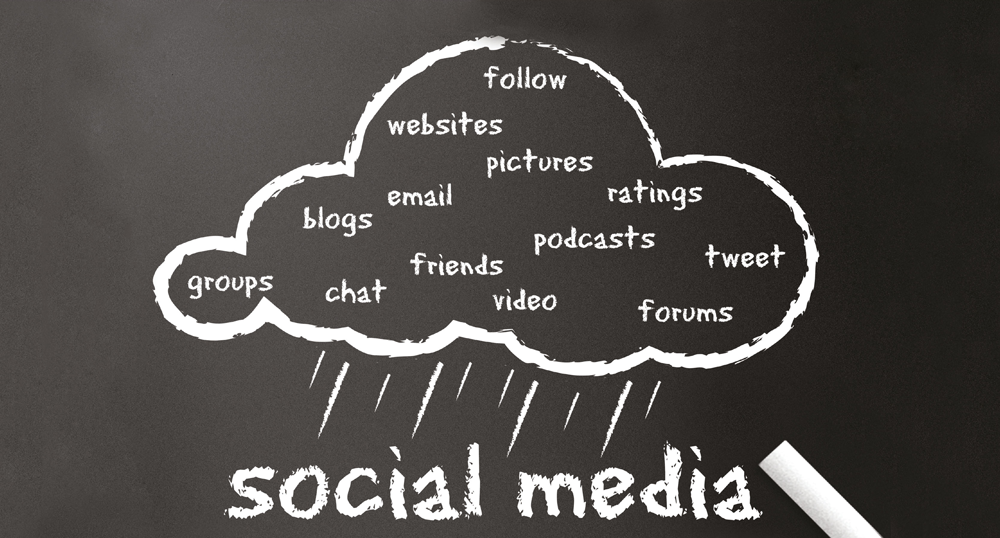CYBER SURVEILLANCE
BIG BROTHER IS WATCHING YOU
Amantha Perera discusses the generation of data by users and their ultimate use on social media
At the entrance to Facebook’s Asia office in Singapore, there’s a massive interactive world map with a swipe screen that shows the popular social media platform’s reach. Flashing strobe lights on a swirling globe indicate who is on Facebook and what’s being shared. You can check the Philippines, India or even Singapore and receive disaggregated data.
During a visit early this year, I checked on Sri Lanka and didn’t see even a tiny blip. This didn’t mean that no one was using Facebook in the island – that’s hardly the case. Instead, it meant that Facebook was not linking live data from Sri Lanka onto the map since the information wasn’t considered important.
Though Facebook may not deem Sri Lanka important, Sri Lankans find social media very important. In a nation of some 22 million souls, there are between five and six million Facebook accounts that are responsible for over one billion content points on Facebook, in addition to linked platforms like WhatsApp and Instagram.
It was only after the race riots in Kandy not long ago that public attention focussed on social media platforms and their mass appeal. Research reveals that over 80 percent of people on Facebook use mobile devices to access the web and they mostly use Android devices to do so. The handheld device is going to be the key vector for creating digitised influence.
Want more reasons to be convinced that the mobile phone is more than simply a connectivity device?
In 2010, there were 17 million registered mobile connections in Sri Lanka and by March this year, this number was a shade below 30 million. That is indeed a steep growth trajectory.
As handheld devices become the key platform used by billions of global citizens, their inherent dangers increase exponentially. Bots, trolls and other computed influence peddling is nothing new.
And as a large chunk of our mundane lives keeps shifting to the net rather than interacting with friends as we figure out what’s happening, deciding where to holiday or eat out, or what to buy, the data imprint that each individual leaves behind is massive, detailed and can be easily manipulated.
For instance, what is the first thing most people do when they wake up in the morning? They reach for their mobile phones – and many of them check Facebook. It’s very easy for Facebook to figure out your browsing habits and channel ads accordingly.
Forget Facebook; simply browse the history of your taxi app and you will figure out the kind of details that lie within, and how that information can indicate your daily routines and habits.
A decade ago, you’d be sitting in front of the television and forced to watch every ad from ballpoint pens to cars. However, Facebook will only channel ads that are selected on the basis of your browsing habits. If your browsing habits suggest you like extremist content, expensive sneakers or even old Hindi movies, ads that appear on your feed will reflect those tastes.
One of the key successes of social media has been that it allows users to decide what appears on their feed. However, the flip side to this is that these platforms know what you are looking for and where – stuff that even you may not know! The common misconception is that users are the consumers of social media. This is only partly true because in return for the free ride, we’re the products that social media giants sell to advertisers and others.
While a platform like television would allow for a multitude of viewers and products, the curation of – as well as algorithms used by – social media platforms ensure that you are sucked deeper and deeper into an echo chamber where you feel comfortable.
And machines can manipulate trends too.
During the first half of this year, Twitter took down over 70 million accounts that had been locked. The idea was to take some action against fake and inciteful content. In August, both Facebook and Google took down accounts they felt were pushing extremist agendas.
Recently, a group of social media giants met to discuss ways to minimise external manipulation of upcoming midterm elections in the US. Currently, the onus of creating a safer web – or one where you can trust the content, at the very least – is on these platforms and governments, which in itself is a double-edged sword.
While the platforms will be swayed by profit motives, governments will always be attentive to security aspects and how data could be used, both for national security and surveillance.
Another important point is to improve user hygiene. How many of us think twice about allowing apps to access our location, phone images and other content? How many allow Facebook to routinely update our location? It’s like sending an SMS to all our phone contacts when we travel! We don’t realise this because it’s fully automated.
And how many mobiles phones in Sri Lanka are properly password locked and regularly updated? How many of us join WhatsApp groups or forward messages that are being forwarded to us without verifying their authenticity?
Immense power lies with individual users to ensure we do not give more traction to vile, obnoxious and fake content. If we collectively transform our user hygiene after educating ourselves on the risks of cyber attacks etc., perhaps governments will have one less reason to push for greater surveillance.






The more users will be tempted to browse, the more they will be engrossed with cyber life; consequently, users will be subject to more manipulation. Then the weight of surveillance’s role increases.
To enable meaningful usage, cyber ethics and the ethics of a person must be greatly influenced by self-discipline. Many are being drawn to the influencing forces of cyber life, which is much more driven by mobile devices than its original purpose of communication, which may not be conducive.
Hate speech through posts that arouse users, some people and organisations that disguise their true forms, and users accepting, responding and forwarding the unknown on the internet, and so on – unlike in real life – create avenues to manipulate business and make harmful ideas go viral.
Word of mouth is stronger on noiseless social media in cyber space. Spreading word of mouth and getting people (users) to react to it works well in cyber space – from food and fashion to politics.
Due to automation, users may not realise the gravity of their lives’ ‘digital exposure’ expressing their location, thoughts and more in what they reveal through easily accessed devices. It is for these very reasons that the role of surveillance is becoming increasingly critical.